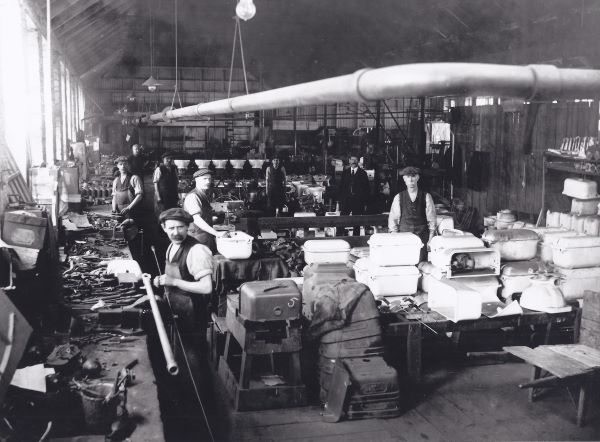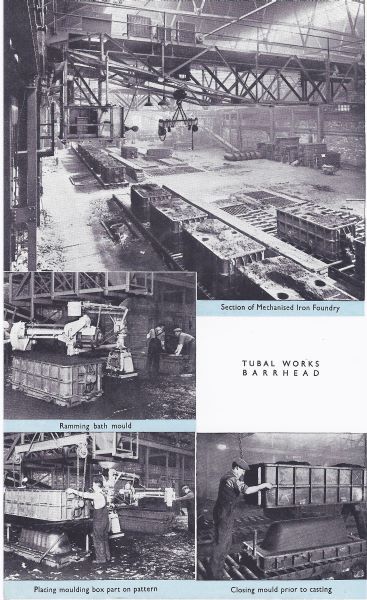

Manufacturing Technology
Manufacturing Technology
To the original John Shanks and his early workforce the modern factories and machines of the 1960s onwards would have seemed like science fiction.
In the early part of the 20th century, the bulk of the work was done by hand. Brass workers used simple lathes, baths were produced by filling and ramming moulding boxes by hand and, in the cisterns section, the workers used matched plate patterns with no mechanical aid whatsoever. Fireclay had to be produced by the pressing method, which involved a tremendous amount of manual work.

After WW2 the company began a programme of modernising the works which would result in fully mechanised factories, increasing production but taking less manpower and space.
Chemistry was another area in which the company was set to develop, as the science was crucial to the development of pottery. Jack Shanks had set up a small laboratory where he liked to carry out experiments, but in 1911 the company took the step of employing a qualified chemist, J. G. Roberts. During World War 1, the company developed vitrified acid proof ware which was used to manufacture chemicals. This was an important step in the development of vitreous china from which sanitary ware would start to be made.
J. G. Roberts also worked with chemists in other industries to develop chromium plating, which we now see as a standard finish on taps and other bathroom fittings. In 1961, technology developed by the motor car industry was adopted, a chromium plating plant was constructed and this process was mechanised.
Pottery products require to be ‘baked’ in a kiln and in 1929, the company updated their kilns to a Woodall Duckam tunnel kiln at a cost of £25,000. Following that in 1936, the more advanced Dressler kiln was added to the Victorian Pottery, becoming known as the No.1. In 1938 another Dressler (no.2) was installed at Longpark Pottery, Kilmarnock, which by then had been bought by Shanks & Co. During WW2, The Duckam Kiln was used to produce 36,000 tons of steel bars from which armour piercing shot for tank warfare was made.

After WW2, the company realised they needed to modernise their works. The Brass Finishing department was re-equipped by the end of 1945, and then came the building of a completely mechanised bath moulding plant in 1946. A big leap forward occurred in 1967, when Shanks patented a battery casting machine, which produced double a man’s output, with half the effort and using half the space.
